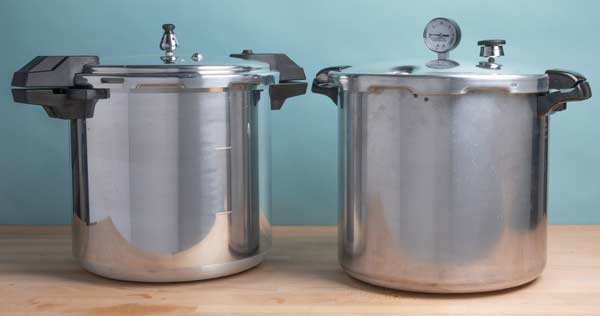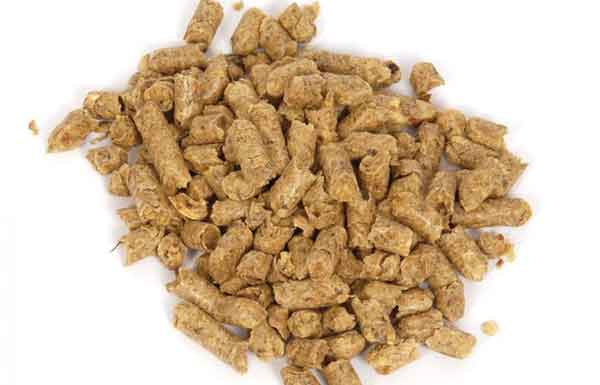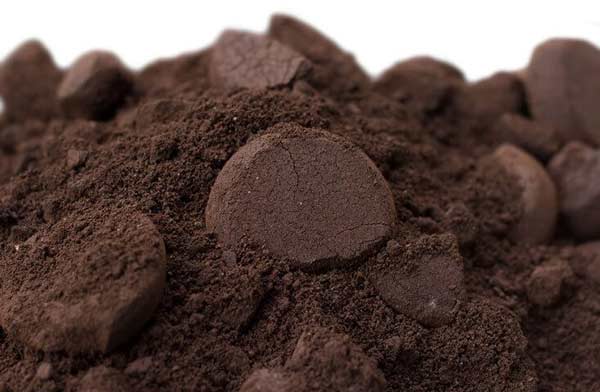Mushroom Substrates – Selection and Preparation
What are Mushroom Substrates?
If you’re thinking about growing mushroons you’ll have read about substrates and might be unsure exactly what they are. If so, don’t worry; it’s all very simple.
First, it helps if you understand how mushrooms grow. Mushroom spores come first, and they’re best thought of as being mushroom seeds. Simplifying the process, these spores are typically injected into some form of cereal grain, such as rye or wheat grain, where they can grow. The spores then begin to develop, consuming nutrients from the grain and colonising it with mycelium, which you might think of as their roots and which resembles a form of fungus. Once the grain has been fully colonised it can be referred to as ‘grain spawn’.
This grain spawn can then be introduced to its main source of food, which is your mushroom substrate. Plants get their energy from the sun and water and nutrients from the soil. In the wild, mushrooms get their nutrients from decaying material around them, such as decaying vegetation, wood and so on. When you grow mushrooms at home, they get their nutrients and water from the substrate you grow them in. When the grain spawn is introduced to your substrate it will continue to grow, slowly colonising it until it has been totally taken over by live mycelium. At that point, the mycelium can start to fruit and grow mushrooms.
What is the best type of substrate?
Mushroom substrates can be made with a fairly wide range of ingredients. Home and commercial mushroom growers will use a range of mushroom substrates, usually a mix of different (and generally inexpensive) materials. Common ingredients include hardwood sawdust, hardwood pellets, straw (loose or pellets), coco coir and vermiculite, dried horse manure and even coffee grounds. Some add supplements such as gypsum, which acts as an anti-binding agent. Further supplements might be used to add nutrients or affect ph levels but many growers manage without these. Specific substrates are used for certain mushrooms – CVG substrate, for example, is made of coco coir, vermiculite and gypsum and is used by button mushrooms and so-called ‘magic mushrooms’.
Should I make or buy my substrate?
The answer depends entirely on you. Preparing and mixing substrates can take a little time before you get it right, but it’s not hard. It does take time and requires a few bits of equipment, but anyone can do it in almost any home. Buying pre-made substrate is of course easier, but there are plenty of choices out there and you can even buy substrate from our online shop!
Pasteurisation and Sterilisation

Typical pressure cookers
Mushroom substrates must be prepared correctly before you can use them. This means you need to add water plus any nutrients or supplements, then pasteurise or sterilise the mixed substrate to kill off competing organisms and prevent contamination.
Materials such as straw, wood, coco coir, manure and so on contain a wealth of organic substances that your mycelium needs, but they will also naturally contain mould, bacteria and potentially other (undesirable) fungi. These contaminants may grow faster than your mushrooms and will in any case compete with them for space and available nutrients. You need to kill off these contaminants to ensure your mushrooms can grow optimally. This is achieved by pasteurisation or sterilisation.
Pasteurisation
One way to pasteurise your substrate is to heat it up to temperatures between 65–85°C for a couple of hours using a hot water bath or steam. This doesn’t kill all the harmful microbes in it, but does a good job all the same. In fact, it can sometimes be an advantage for certain microorganisms to remain in the substrate.
Another method is cold water lime pasteurisation (sometimes called Lipas). This pasteurisation method is good for substrates that contain little or no supplementation. For example, it’s ideal for processing straw, sugar cane mulch and hardwood fuel pellets. The substrate is soaked in cold water and hydrated lime and will be pasteurised overnight. Cold water pasteurisation methods are sometimes deemed to be inferior to hot water pasteurisation as there is an increased risk of contamination developing. This method is best reserved for use with hardwood pellets or straw that is visibly clean and dry.
Sterilisation
Sterilisation means you heat your substrate with steam up to a high temperature, under pressure. For home growers this means sterilising your substrate in a pressure cooker at 15psi, which increases the temperature to 121°C. The substrate is ‘cooked’ in this way for 2 hours. Sterilising your substrate in this way kills any living microorganisms that might compete with, or even spoil, your mushrooms.
Common Mushroom Substrates

Hardwood pellets
If you ask a hundred different mushroom growers, you’ll probably be given several dozen different recipies to use. That’s because many things can be used to grow mushrooms and, apart from personal preferences, different mushrooms will grow in varying ways on different substrates.
Logs
Many of the mushrooms you can grow at home grow naturally on dead or dying trees and wood. You might think that if that’s the case, the best way to grow mushrooms will be on a bunch of logs, but it’s not that simple. Firstly, those mushrooms that grow on wood generally only grow on certain types of tree. Secondly, the process is extremely slow, with first crops from logs taking anything up to a couple of year. However, once inoculated, a log can produce flushes for many years and won’t need any maintenance or sterilisation!
Hardood Sawdust, Woodchips, Wood Pellets
For much the same reason as logs make sense as a substrate, hardwood sawdust is a popular choice for mushroom cultivation. It’s cheap, being a by-product or waste product of wood mills, and is not expensive. You can use loose sawdust or, more commonly, sawdust pellets. Sawdust isn’t normally used on its own and is often mixed with wood chips to improve structure and rate of colonisation. As an alternative to hardwood sawdust, you can use wood pellets, often sold as fuel pellets and widely available.
However, whether you use sawdust, wood chips or pellets, they need to be hardwood, not softwood.
Straw
Wheat straw is an excellent substrate for mushroom cultivation either on its own or mixed with other substrate types such as coffee grounds. Straw is cheap, especially if you have farms nearby. It can be a little messy to work with, as fresh straw will need to be chopped, cleaned and pasteurised. You can also buy small bags of straw from a grow store or garden store, and this will often come pre-cut and cleaned. As an alternative, many growers choose to use straw pellets, which will do the same job.

Soya hulls
Soya Hulls
Soya hulls, a by-product of soybean oil production, make another very good substrate for mushroom cultivation. Some growers find the best results come from mixing soya hulls with with hardwood sawdust, though you’ll need to experiment with mix ratios to suit the type of mushrooms you want to grow. As a guide, start with a 1:1 mix first and take it from there.
Coco Coir, Vermiculite & Gypsum
A mix of coco coir, vermiculite and gypsum makes a good mushroom substrate and although it is very commonly used by those growing magic mushrooms, it can be used for many other types too. This type of substrate is usually referred to as CVG substrate. Coco coir is made from the husks and shells of coconuts and vermiculite is a heat-treated and expanded mineral that is excellent at water retention. A typical coco coir and vermiculite mix is 1:1 with gypsum added at about 5% by volume. This mix should ideally be sterilised before use.
Coffee Grounds
Coffee grounds will be a surprise inclusion to many but old news to experienced gardeners who know they are high in nitrogen. While coffee grounds make a great substrate, they’re probably not the easiest to work with for beginners. As part of the coffee making process, the grounds have already been sterilised, but you only want to use fresh grounds, ideally the same day they were brewed. The reason for that is that coffee grounds are rich in organic compounds, and can easily contaminate your operation, and will attract mould very very quickly if not used promptly and correctly. As coffee grounds will settle into very dense lumps quite quickly, blocking airways and making it hard for mycelium to spread, grounds are best mixed with other substrates such as straw, coco coir or sawdust. Fresh coffee grounds have already been pretty much sterilised by the brewing process but when mixed with other components it’s best to sterlise them again.

Coffee grounds
Horse Manure
Many mushroom species love manure and manure is often used in commercial cultivation for culinary mushrooms, but it does require a bit of effort and careful selection. You can’t just hop into a field and wait for a passing horse to deliver fresh substrate!
Ideally you want dried but clean manure from the fields – not stables as stable manure is likely to have been soaked in urine as well as many other possible contaminants. To make it usable, manure needs to undergo drying and composting first. In this process a mix of manure and straw is heated to 72°C to kill the unwanted microorganisms and assist the wanted ones. Then the compost is pasteurised to remove the remaining contaminants. The above means that while manure is very widely used on a commercial level, it isn’t the best choice for most home growers.
Other Substrates
As suggested at the beginning of this article, there are many other possible substrate options such as cellulose-based materials like paper and cardboard, spent grain and even tea leaves, but those above are the most common.

